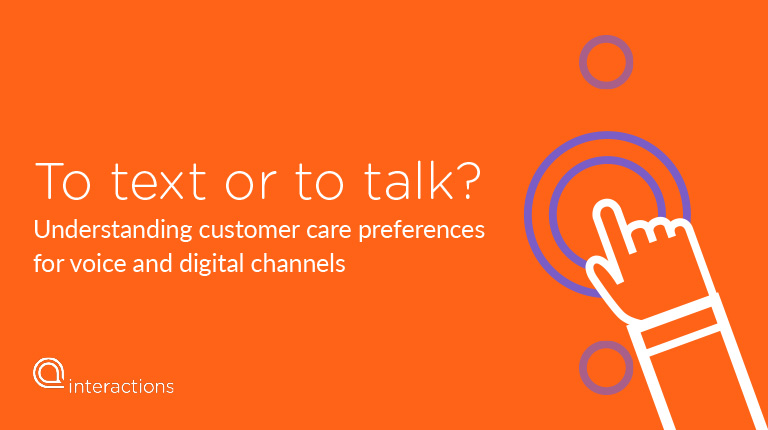We all know that consumer demographics matter when it comes to buying behavior and effective marketing tactics. But did you realize that age has a significant effect on how a person wants to interact with brands they love? In an era were customer experience is often a major, or only, differentiator, understanding the preferences of your consumers may be the key to turning occasional buyers to loyal customers. Using results from a survey conducted by The Harris Poll, titled Trust in AI solutions: Pairing technology efficiency with consumer preferences, we’re going to explore the generational differences in how consumers want to engage with your brand and why it matters to your business.
According to the data, Americans are split 50/50 when it comes to whether they prefer texting or voice communication when interacting with companies. When you click into the data though, you’ll find glaring generational differences. 67% of millennials (ages 18-37) prefer to text, and 33% prefer using voice channels. Inversely, only 33% of baby boomers (ages 54-78) defer to texting as their primary method of communication, with the 67% preferring voice.This may seem obvious–of course millennials prefer texting. We’re talking about a generation that has grown up with texting as a primary method for communication, and is stereotyped for being more comfortable with electronic versus face-to-face dialogue. But, what’s actually driving these major differences in preference?
Time is Money
The number one driver of texting preference was ease of engagement. Put simply, millennials believe that it’s easier and less time consuming to have a conversation via typing or texting. In fact, 61% of millennials believe that texting is the easiest way to communicate with a brand. Sure, this has to do with their comfort level, but according to our data, 39% also using texting to avoid any queue or wait time.
Baby boomers prefer voice, ironically, because of the speed and effectiveness of actually resolving issues. Voice rules when it comes to speed. 94% of Americans agree that there are instances where voice is the preferred channel. And millennials are on board, 42% will engage with the fastest method of communication.
Consumers, especially millennials, want to communicate in the quickest way possible, without repetition, difficult to use tone use, or long queues.
Avoid Frustrations
Both millennials and baby boomers alike have frustrations with voice interactions. Despite initial preferences though, baby boomers are actually less tolerant when it comes to annoyances they experience while using voice. 60% of baby boomers are frustrated by long wait times and 57% get irritated at having to repeat themselves. Of course millennials as well have experience with these common frustrations. 45% and 36% of millennials feel frustrated with repetition and wait times, respectively.
Everyone can sympathize with these common frustrations, and Conversational AI can help. Providing a self-service option that eliminates queues, hears consumers the first time, and reduces the time deciphering a touch tone system will delight consumers from all generations.
Security Matters
When it comes to implementing AI voice solutions, the data used and shared has a major generational impact. Much like the split in what frustrates consumers, millennials are more forgiving when it comes to the use of personal data. Around 60% of baby boomers are creeped out when AI knows other household member’s past interactions with a company or when social media data is used to make suggestions. However, only 45% and 40% of millennials agree.
Since speed and ease of communication reign as top factors in determining method of communication, Americans are actually willing to look the other way when AI solutions use data to help quickly solve a problem or alert them of an issue. In fact, 3 out of 5 Americans would support companies using more invasive AI data if it helps efficiency. Baby boomers are, of course, less receptive to this idea than millennials, with only 51% in support compared to 64% of millennials.
Enhance your Customer Experience
While there are clear splits in texting versus voice preferences, what really matters is allowing your customers to engage quickly and easily. Outdated voice systems have historically forced customers to the point of frustration by requiring repetition, having long queues, or difficult to use scripts. Customers leave the conversation feeling frustrated, which creates a negative perception of the brand. Conversation AI enhances convenience, speeds up interactions, and uses data when appropriate to elevate the experience.
While generational preferences certainly matter, the true differentiator for all customers is a quick and efficient experience. Finding a technology, like Conversational AI, that can support this will make your company stand out among competitors and keep customer retention high. To read more detailed information about customer preferences from this survey, check out our eBooks To Text or To Talk? or Artificial Intelligence and the Customer Experience.





